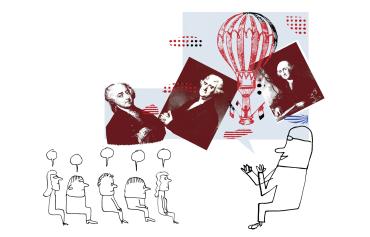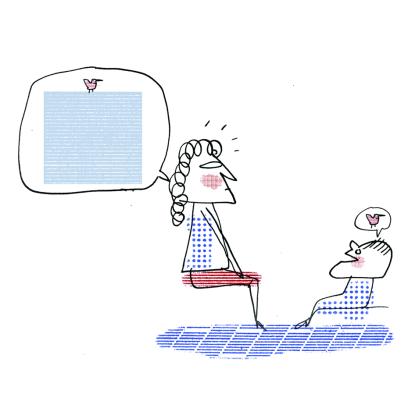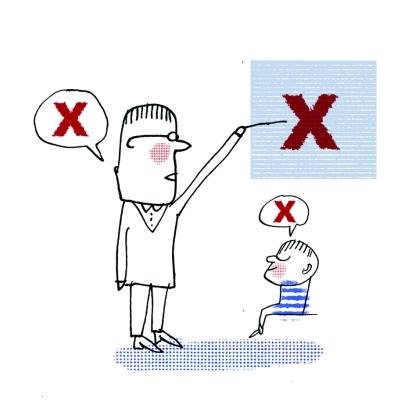As this article explains, seductive details are interesting bits of information—including text, videos, animations, or photos—that capture students’ interest but ultimately decrease learning. This research is especially important throughout this pandemic, as schools are struggling through an extended period of trying to reopen safely while knowing that a rise in COVID-19 cases could cause a return to distance learning at any moment. Since the spring, teachers have been going to great lengths—online, by phone, and with paper packets—to engage their students and ensure learning continues. As teachers plan lessons and select, revise, or create materials for their students, considering the potential impact of seductive details is critical. Many teachers are likely tempted to sprinkle even more fun moments into their lessons and materials than usual as they try to bond with students and hold their attention. But in doing so, will they be decreasing learning? This research indicates that there are real drawbacks to using seductive details—particularly for students who are already behind—but it also offers some guidance on how to use such details without significantly reducing learning.
–Editors
“It was the year 1815. Mount Tambora, an active volcano in Indonesia, erupted—and it was no ordinary eruption. Not at all. In fact, it is reported that the ash and gas from the eruption obscured the sun and affected climate resulting in starvation and disease. But how did it happen?” says Mrs. Smith as she starts the geology lesson. Today’s lesson is not actually about the results of eruptions; what students are supposed to learn is what conditions cause volcanoes to erupt. Mrs. Smith had thought of using Pompeii as an example, but wanted something new and interesting about volcanoes to get her class of 32 fourth-graders to pay attention. After all, students cannot learn new information without paying attention and they pay attention when they are interested, right?
Right. But, as with almost everything related to instruction, it is not that simple. Researchers have found that if interesting information is irrelevant to the lesson’s learning objectives, it is likely to hurt students’ learning. In Mrs. Smith’s classroom, students are more likely to remember the devastation from the dramatic eruption rather than the underlying geology concepts.
Researchers call these attention-grabbing, irrelevant pieces of information seductive details. They can be words, illustrations, photographs, animations, narrations, videos, or sounds. Studying the effects of seductive details is a growing area of research—but it is far enough along to merit teachers’ interest: we have over 20 years and dozens of high-quality studies to draw from. As I explain in this article, there is strong evidence that when instructional materials include seductive details, students’ learning likely suffers. I begin with a brief introduction to our learning process, then proceed to highlight how seductive details hurt learning and to what extent. Next, I suggest three tips to reduce their detrimental impact on learning and conclude with concrete examples.
Let’s start at the beginning, shall we?
How Do We Learn?
Learning is a complex process with attention, interest, motivation, sleep, general health, learning materials, and community each influencing learning outcomes. At the very core though, learning is a simple three step process: encoding, storage, and retrieval.
Encoding is the step in which we receive information. Individuals’ attention, materials, learning environment, and more can impact what and how much they take in. As is the case with so much in life, what goes in determines the quality of what comes out. There is much research investigating how to design learning materials to smooth the path and support students’ encoding. Although a detailed review of these principles is beyond the scope of this article, one central idea sets the foundation for effective design: we learn better when we are presented information in both visual (e.g., images or charts) and auditory (e.g., listening to an explanation or reading a text*) forms than in just visual or auditory form. This is especially true when the visual and auditory information are complimentary instead of redundant.† In sum, we can set learning off to a good start with one tip: distribute content across visual and verbal forms.
Once students have received information, they have to process and store it. When learners don’t store new knowledge, they have not learned. Early in the study of how memory works, researchers conceived of our brains as massive libraries from which no book (or piece of information) was ever lost. In the last couple of decades, this understanding has undergone a massive shift with more rigorous studies and technological advancements in neuroscience. What we now know is that our brains store information in networks (or webs), called schemas, that connect relevant pieces of information. (I am using “information” very broadly to include everything from academic content to emotional experiences; a student’s new information could be a chemistry fact or their home-run hit when playing ball.) This concept of a dynamic network structure is, in my opinion, perhaps the most revolutionary idea to come out of the learning sciences. Why? Because a network structure suggests two key points:
- First, new information connects to previously known information (a.k.a. prior knowledge). This suggests that when students do not have much related knowledge to start with, it is important to provide a foundation, such as a meaningful experience or an informative lecture, for their learning (i.e., to start creating their storage network on this new topic).
- Second, students are more likely to remember information that is connected to many other concepts and experiences, new or old. This could work in our favor when learners engage in content in multiple ways, connect concepts across content or subject areas, or even connect lived experience with technical concepts (for example, understanding how they manipulated force to hit that home run).
Retrieval—the act of remembering what you have learned—is the final step of the core process of learning. Retrieving a piece of information energizes, strengthens, and alters the associated network of connections. This is why recalling knowledge—discussing key events in history, solving a math problem, or incorporating academic vocabulary in writing—is essential to ward off forgetting. Dormant networks slowly deteriorate, but active networks do not. Retrieval is also essential for updating networks. When students recall prior knowledge while thinking about new, related information, their brains add connections to their networks (denoting changed understanding or learning). This means that as students learn more about something, they remember the information differently.
For example, when students first start learning about the American Revolution in elementary and middle school, they likely acquire some basic knowledge of key figures and ideas, like George Washington and independence. In high school and college, their network on the revolution does not merely expand, it changes. Older students’ factual and conceptual knowledge becomes more nuanced and detailed, tying to related networks on other wars, other people committed to democracy, challenges to our principles, and more.
In short, as students learn and remember more, their networks change. Some information units may collapse to form a single idea (e.g., key persons) and new information may add to an existing network or connect to another related, previously learned network of information. Thus, as students are equipped with more knowledge, they are more likely to perceive large amounts of related information as one coherent chunk or concept (as opposed to an overwhelming number of details). For designing instruction, a critical part of this process is having students express their understanding; this helps them (and their teachers) identify what they have learned and determine what information got lost along the way.
That’s it. The three-stage process of encoding, storage, and retrieval forms the core of learning. When I am developing content for teaching or presenting to a large audience, I find that understanding how seductive details impact the learning process helps me predict if and how the examples, anecdotes, and fun facts I use in my materials (in-person or remotely) might affect learning outcomes.
How Seductive Details Do Their Damage
Researchers have four hypotheses as to why seductive details tend to decrease learning performance. The jury is still out on which of these is the leading reason; they probably are not mutually exclusive. While research into these underlying mechanisms is ongoing, I find it helpful to use all four hypotheses to identify potential seductive details in my materials.
1. Distraction hypothesis: Learners’ attention is drawn away from the essential content by details that are interesting but not relevant to the learning objective.
- Key idea: When students are distracted, the wrong information is encoded in the network.
- Example: If I tell students that Martin Luther King, Jr., was initially named Michael King or that he narrowly escaped an assassination a decade before his death, will that distract them from focusing on King’s beliefs and values?
2. Diversion hypothesis: Learners’ attention is drawn away by details that remind them of or connect to irrelevant prior knowledge.
- Key idea: When students are diverted, they retrieve a different network of information (schema) than intended.
- Example: Will this Friends pivot GIF (https://bit.ly/2M2QL0x) trigger a conversation about the TV show instead of focusing on the mechanical concept?
3. Disruption hypothesis: Learners get confused by the irrelevant details and thus cannot form a coherent mental model of the essential content.
- Key idea: When students are disrupted, they have received an input that they are unable to place sensibly within a relevant network of known information. This could be because they don’t know enough about the main topic and are wondering how to fit in the seductive detail (which they do not recognize as irrelevant).
- Example: When I paused during my explanation of the water cycle to explain how rainbows appear, did I prevent students from forming a coherent picture of the cycle in their minds?
4. Memory overload hypothesis: Learners’ attention is spread too thin across an overwhelming number of details, which limits their available mental ability to process learning content.
- Key idea: When students are overloaded, the irrelevant details take memory space that could otherwise be taken by important details. The more relevant prior knowledge students have, the more likely they are to already know some of the new content being presented and, therefore, the less likely they are to be overloaded.
- Example: I am creating a timeline for my unit on World War II; should I include the information I want all students to remember, all of the people and events we will be reading about, or something in between?
Well, we’ve checked off our list and it looks like most of our material is solid. But without all those seductive details, it does feel… boring.
As educators, we strive to design materials for our classes that will work well for students who are behind their peers, average learners, and those who seem to be a bit ahead of the curve. How can we use some fun details while mitigating their detrimental effects? Research does not provide a concrete answer yet; we do
have leads, though. Much research on seductive details has attempted to identify the conditions in which the effects of seductive details fluctuated. But first, let’s get the big picture.
How Much Do Seductive Details Impact Learning?
Earlier this year, I published a meta-analysis on the seductive details effect that included studies from the past 20 years. I’d read and quantitatively summarized 68 comparisons of students’ learning when they learned with materials that either included or excluded seductive details. In a typical study investigating seductive details, learners completed a pretest or survey capturing how much they know about the topic. Next, learners proceeded to learn with presented material that either had seductive details or didn’t. Finally, they responded to a learning test (e.g., took a post-test) immediately after learning that assessed how much they retained and how well they could apply it. The findings from the meta-analysis suggest that those who learned with seductive details were less likely to remember and apply what they learned. Most of these studies were conducted in psychology lab settings with instructional time of about 6 to 10 minutes (though a few were longer).
Let’s rip the Band-Aid off: How much do seductive details hurt learning? The meta-analysis found an average effect of -0.33, with a range from -0.48 to -0.18. Let’s put this difference in terms of hypothetical test scores. Say you taught a unit without seductive details, gave a test, and the average score was 85, with most students scoring between 75 and 95. Now say you taught that unit to another class and included seductive details. The average score would likely drop to 81.7 (though it may range from 80.2 to 83.2).‡ The class average dropping to B- may not seem particularly important, but for students who are just barely passing those few points could make an enormous difference.
When we bring together our understanding of the learning process and the different hypotheses for why seductive details hurt learning, the role of prior knowledge takes a front seat. Seductive details could impact the encoding step or the storage step, both of which affect the extent to which one can meaningfully learn and apply information. Hence, it should come as no surprise that the seductive details effect seems to be more pronounced in learners with low prior knowledge about the topic. In fact, the negative impact for students without prior knowledge is double the effect for those with it (-0.52 vs. -0.24). Seductive details had a more detrimental impact when learning was assessed with open-ended questions than with multiple-choice questions. Scoring lower on open-ended questions was an expected result: responding to open-ended questions requires learners to recall learned information without any support, but multiple-choice questions often cue learners.
Given that seductive details potentially impact every step of our learning process, as a researcher, I strongly recommend excluding them from learning materials. As an educator, I know that a laugh can break the tension in class or build rapport with students. That is why I have pulled together my top three tips for using seductive details in our lessons, if we absolutely must.
Top Three Tips for Using Seductive Details Cautiously
With 68 high-quality studies included in my meta-analysis, we can be fairly confident that seductive details do cause the small-but-meaningful detriment to learning described above. Some research studies have dug deeper, specifically investigating how the design of a seductive detail could impact student learning. For example, does an image that provokes a positive feeling influence learning differently than one that has a negative connotation? Not really, it turns out. However, once we start isolating the effects on the basis of different types of details—like where the distracting detail is placed (in the middle or at the end of a text), when a detail is shared (at the beginning or middle of a lecture), or what format it is in (a photo on a printed page or a cartoon character popping up in a video)—we have fewer studies to draw on. So, as I share my top three tips based on key findings on how different features of seductive details impact learning, keep in mind that current research can say that all these features reduce learning—only the estimates vary regarding to what extent learning is reduced.
Tip 1: Avoid Static Details
Static seductive details—like an image in a book—were more detrimental than dynamic seductive details—such as a brief aside during an explanation or a GIF. Consider your slides in which you have sprinkled on some fun. Let’s say you have a GIF on a slide. The GIF is likely going to garner attention but may also signal to learners that the content of the GIF does not need to be learned. Similarly, if you have animated a slide such that a comic pops up and quickly disappears as your learners start working on the key content, they are less likely to devote much attention or other cognitive resources to processing the detail. The fact that the GIF or comic is visible only momentarily is important. Dynamic seductive details provide a brief spark—not an ongoing distraction—reducing their negative impact on learning.
On the other hand, consider the fun fact in a box in their textbook. The static seductive detail, highlighted in this case, may be interpreted as important and relevant by learners and therefore disrupt their understanding of the key idea. I’ve heard learners forcing themselves to connect an irrelevant image on a slide to the content and criticizing the instructor for not drawing out the (nonexistent) connection explicitly. Even if the extra detail may appear too silly to be mistaken for being important, remember that prior knowledge can alter that perception (and the students with the least prior knowledge are the least likely to be able to tell what is important). Plus, it still takes time and attention away from the important information. Either way, the static nature matters: the detail remains on the page, confusing students or diverting them.
If you must add some extra spark to your instructional material, ask yourself one question: How can I make this content fun? For example, if I’m teaching about the storage step of learning, I may look for an animation that shows how the brain’s networks activate together. If I am not able to reframe my content to be fun and I know it is a topic I’ll revisit again anyway, I follow a “blink and you’ll miss it” rule by only including seductive details that students could easily ignore. Now, this works if I am presenting the information face to face. What about a remote scenario in which every student learns independently? For students without computers or internet access, I would develop paper packets. Since this is a static medium that could amplify the impact of any seductive details and reduce learning, I would focus on creating clean, easy-to-follow materials with no seductive details. For students with online access, I might include dynamic seductive details in digital materials if I feel they are absolutely necessary to draw students in. With paper or digital materials, I would also leverage other instructional strategies to support the learning process. For example, I could present the content visually and verbally (to help with processing), break down content into small, coherent chunks and tie each chunk to prior knowledge (to help with storage), and ask recall questions (to help with retrieval and self-assessment).
Tip 2: Use One Channel to Present Seductive Details
As described earlier, our brains process information through visual and auditory memory channels; by presenting information in both channels, we can maximize learners’ capacity to receive and process new information and learn better. But what happens if the information being processed is not relevant to the learning goal? Uh-oh. Worse, what if we present irrelevant information in both channels? Double-whammy. In the meta-analysis, I found that presenting seductive details in text and image formats had a large negative impact.
Because there were over two dozen studies that examined images, we can take a closer look at the visual channel. In instances where only images were used as seductive details, the largest effect was found when photos were used (as opposed to drawings or graphics). This could be because photos are of real things and the reality of the photo may imply importance or relevance, which is very likely in humanities and social sciences materials. From a practical perspective, this brings into question the use of irrelevant stock photos in learning presentations.
Tip 3: Have Fun Early On
Although seductive details are harmful when placed anywhere—at the beginning, interspersed, or at the end—they seem especially harmful at the end. At the beginning of a lesson (or video or text), seductive details could divert learners’ attention. At the end, such details may disrupt learners’ understanding and construction of a coherent mental model. Seductive details at the end could also be detrimental due to the recency effect, which is a well-established finding in memory research. Simply put, we are more likely to recall information from the end of a presentation than from the beginning. Also, remember that in most of the studies I reviewed, there were 10 minutes or less in instructional time. Truthfully, I am not as worried (though I am still a little worried!) about briefly presenting a seductive detail at the beginning of class to spark learners’ interest because I can redirect their attention to key content in the middle and at the end. In contrast, when I prepare my classes or presentations (which can last anywhere from 25 minutes to 3 hours), I strictly avoid including seductive details at the end.
Designing Learning Materials
Okay, that is quite a bit on designing material to minimize the negative impact of seductive details. So, stepping back a bit, how do we design materials that leverage the encoding, storage, and retrieval at the core of the learning process?
- Keep it simple: present essential information clutter free.
- Double down on capacity: leverage visual and auditory formats to boost information processing and storage by using relevant text, images, video, and audio to communicate.
- Keep it together: present relevant information together in time and space.
- Build in breathers: break your ideas down into coherent, small units and pause to assess (and address) students’ understanding before charging on with more information.
- Know your audience: assess learners’ prior knowledge on the specific topic and prepare to provide critical background information.
Concrete Examples
Example A shows what a beneficial handout or slide on Avogadro’s Law might look like. The key concept—the formula—is highlighted, only relevant information is presented, and all of the essential information is presented together.
Example A. Design is clean and content focused
Now consider contrasting example B. The picture of Avogadro is unnecessary and does not add to understanding. However, it does give students the opportunity to be distracted by the image.
Example B. Design with a seductive detail
The average student is likely able to have a bit of fun with Avogadro’s picture in example B and then ignore it. Now, consider example C: it delivers the double whammy with visual (image) and auditory (fun fact) seductive details. The clutter also makes it hard to focus on what is relevant. To top it off, a student with no prior knowledge of this concept or chemistry in general may think that the full name of the person is something that they are expected to know. If you haven’t guessed already, this is an example of how not to make your slides.
Example C. Design likely to reduce learning
Overall, seductive details have a negative impact on learning and should be avoided when possible. The effect could be considered small to medium, depending on the stakes attached to students’ learning performance. One important thing to keep in mind is that the seductive details effect itself has not been investigated for a delayed impact: whether learners will remember more or less a week or a month later is an unanswered question. Nevertheless, research investigating seductive details continues to expand, including looking at ways to mitigate negative learning effects and to consider possible positive emotional impacts. Perhaps in another 5 to 10 years, we will know differently. Until then, it is best to avoid using seductive details. If you realize that you’ve included seductive details in a lesson, consider revisiting the content using more powerful learning strategies such as retrieval practice, note-taking, and elaboration.§
Kripa Sundar (NarayanKripa Sundararajan), who earned a doctorate at Washington State University, is an independent consultant, researcher, and parent working to spread the love of learning grounded in the science of learning. She recently launched Learning Incognito (learningincognito.com), a resource hub for parents, and published a book for young children, How Can I Learn? (kripasundar.com/howcanilearn). Visit her website, kripasundar.com, to learn more.
*Reading is sometimes mistakenly thought of as visual information processing, but the visual work of recognizing letters is just a tiny fraction of the effort involved. The information processing involved in reading is mainly auditory as you listen to the voice in your head (which is essentially your own private read aloud). (return to article)
†Please do not confuse this idea with the myth of learning styles, which suggests that teaching to students’ visual, auditory, or other preferences increases their learning (it doesn’t). For more on learning styles, see “Does Tailoring Instruction to ‘Learning Styles’ Help Students Learn?” in the Summer 2018 issue of American Educator, available at www.aft.org/ae/summer2018/willingham. (return to article)
‡Here is a quick look at these calculations. With an average score of 85 and a standard deviation of 10 (which is what I mean in saying that most students score between 75 and 95), we can use the average effect size of seductive details (-0.33) as follows: 85 + (10 x -0.33) = 81.7 points. The range is calculated in the same way: 85 + (10 x -0.48) = 80.2 points and 85 + (10 x -0.18) = 83.2 points. (return to article)
§For more on retrieval strategies, see “Interleaving in Math” in the Spring 2020 issue of American Educator, available at www.aft.org/ae/spring2020/agarwal_agostinelli. (return to article)
[Illustrations by Serge Bloch]






